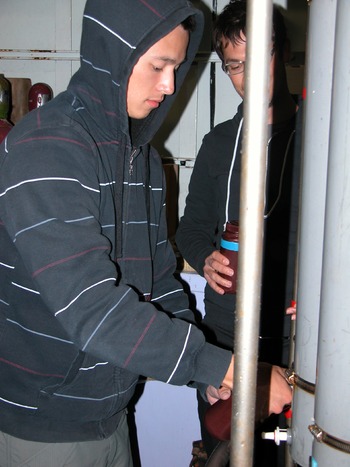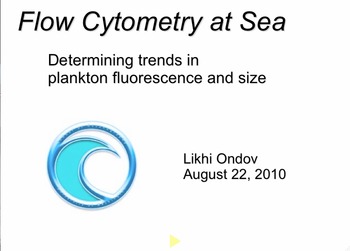Likhi Ondov: Daily Trends in Open Ocean Phytoplankton Biomass
My primary objective is to help develop a statistical method of detecting changes in plankton population and single-cell fluorescence and size over time and depth. Initially, the investigation's scope will seek to identify circadian cycles. These results will then be described with respect to their correlations with temperature, oxygen, and chlorophyll with depth. The statistical program R will be used to create a script that identifies when plankton populations express aberrant characteristics.
I will use samples of seawater collected from rosette/CTD casts and analyze them in the SeaFlow cytometer onboard R/V Thompson. Whenever samples are collected, an existing R script will analyze data on plankton as available from the SeaFlow computer's outputs. This script will determine plankton baseline fluorescence and size with respect to time. Throughout the cruise, I will work on an additional script that determines if variations in the per-cell or population fluorescence and sizes are enough to be considered significant deviations from the norm.
The new R script achieves two goals. First, the results collected from CTD casts be determined to have some correlation to temperature, oxygen, and chlorophyll content. The result of the cruise would provide nearly real-time data to track changes and results with time. Second, the script would also allow detection of abnormal behavior of the SeaFlow output as a result of clogs, equipment malfunction, and human operational errors. On a broad scale, the script would have the ability to detect changes in any system output over time. In this cruise, the script will be used to automatically pick out changes in plankton cell and populations with depth and time while also detecting abnormal equipment behavior.



